Highlight:
This was the longest time that I spent prowling the Tree Top Walk Trail, around 6.5 hours from the start point to the end of my trip. In addition, I had taken a record number of pictures, close to 900, on just one trip as far as I can remember and even cleared out the power supply of 2 camera batteries. Needless to say, there must be something of great interest along the way that made me stopped often to explore in detail.
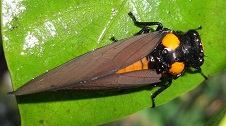
 The most excited part began early, within the first hour of the walk when I came across two rare
Golden Black Cicada (Huechys fusca) on a leaf of the
Common Yellow Stem Fig tree (Ficus fistulosa).
One of them was positioned near the tip of the leaf while another one was at the other end of the leaf. As the leaf was slightly
above my height, I had to gently pull the branch to lower the leaf in order to take some good pictures. I was anxious that my rare
find might just dash off due to the movement. Luckily, it did not happen and I got my pictures. There was
a report on this
cicada in the Nature in Singapore journal if you would like to read more about this creature.
The most excited part began early, within the first hour of the walk when I came across two rare
Golden Black Cicada (Huechys fusca) on a leaf of the
Common Yellow Stem Fig tree (Ficus fistulosa).
One of them was positioned near the tip of the leaf while another one was at the other end of the leaf. As the leaf was slightly
above my height, I had to gently pull the branch to lower the leaf in order to take some good pictures. I was anxious that my rare
find might just dash off due to the movement. Luckily, it did not happen and I got my pictures. There was
a report on this
cicada in the Nature in Singapore journal if you would like to read more about this creature.
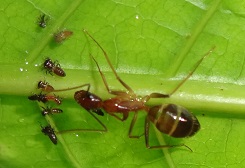
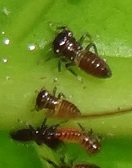 The ant picture shown was not
actually about the ant but the tiny creatures in front of the ant. At a first glance, they looked like termites. But, ant does not
normally farm termites. They should be the nymph of a type of hopper. At one point,
I thought that they might be the nymphs of cicada since they were found near the site where I spotted the 2 unusual cicadas and
cicada is a type of hopper. After doing some searches on pictures of cicada nymphs and those of the other hoppers, I suspect that
they might be the nymphs of a type of leaf hopper.
The ant picture shown was not
actually about the ant but the tiny creatures in front of the ant. At a first glance, they looked like termites. But, ant does not
normally farm termites. They should be the nymph of a type of hopper. At one point,
I thought that they might be the nymphs of cicada since they were found near the site where I spotted the 2 unusual cicadas and
cicada is a type of hopper. After doing some searches on pictures of cicada nymphs and those of the other hoppers, I suspect that
they might be the nymphs of a type of leaf hopper.
So much for the short-life excitement of finding the early stage of the cicada nymphs.
The forest was still in its fruiting season. Numerous types of flowers or immature fruits could be seen littering the forest floor at a few spots. The situation was similar to that seen at Bukit Timah Nature Reserve where I visited in March. Since then, I had created a new section in my website to consolidate the information on the fallen parts of forest trees and climbers for ease of reference.
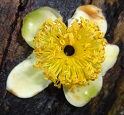
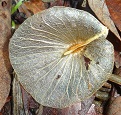
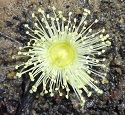
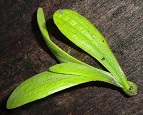
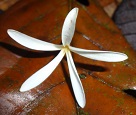
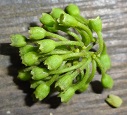

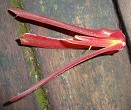

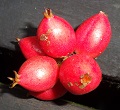


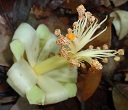
On the tree-top bridge, one could see several fruiting trees or climbers from a distance. I was particularly interested in a Calophyllum species with rounded fruits that happened to closer to the bridge than the rest. During my last trip here in December last year, I saw another fruiting Calophyllum species that was much further away from the bridge. There were several different Calophyllum species in the forest and it is difficult to identify them since most of the time, what I saw were their young plants without flower or fruit. Their identical leaves were not really helpful with the identification. For the current one I saw, I suspect it might be Calophyllum biflorum.
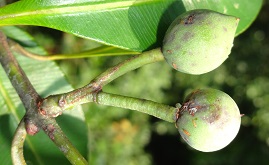
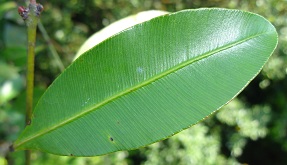
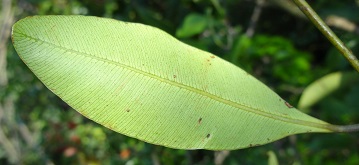
From this trip, I had added 6 new set of plant pictures, namely Croton caudatus, Ixonanthes icosandra, Diospyros buxifolia, Xylopia caudata, Durio singaporensis and Sphaeropteris squamulata. As usual, there were several unknown plants where I will have to file their pictures in my archive folder until I tracked down their identity.
Photo Gallery:
Below are selected photos from this trip arranged according to the sequence that they were taken. There is a text link under the photo that will direct you to more photos of the same species if they are available in my website.
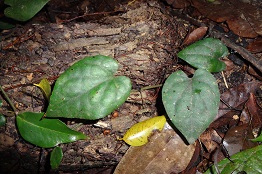
DSC02253
Piper species
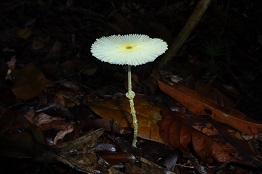
DSC02544
Coprinus species
(Mushroom)
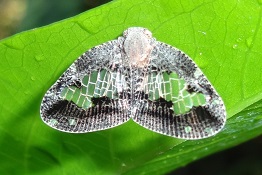
DSC02552
Ricaniid Planthopper
(Family: Ricaniidae)
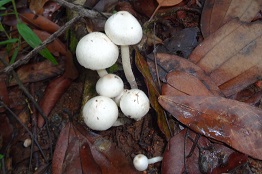
DSC02608
White Mushroom

DSC02640
Hemisphaerius species
(Issid Planthopper)
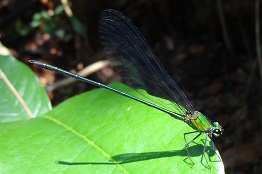
DSC02809
Vestalis amethystina
(Damselfly)
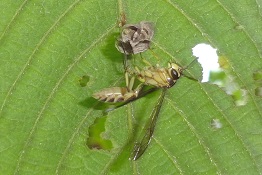
DSC03106
Wasp and Nest

DSC03134
Beetle
Statistics:











































